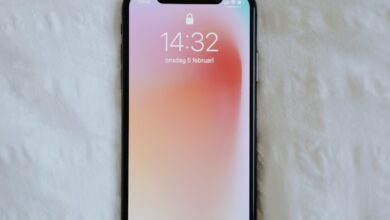The Role of Formatting in Samsung Phone Custom ROM Installation

Are you ready to explore the exciting world of custom ROM installation on Samsung phones? Buckle up and get ready for an exhilarating ride into the realm of formatting and its crucial role in this process. In this article, we’ll delve into the significance of formatting when it comes to installing custom ROMs on your trusty Samsung device.
Formatting plays a vital role in preparing your phone for the custom ROM installation. Think of it as creating a clean slate, wiping away the remnants of your previous software and making room for the new and exciting possibilities that lie ahead. By formatting your device, you ensure that any conflicting software or data is removed, allowing the custom ROM to be installed smoothly.
When it comes to custom ROM installation, there are two primary types of formatting to consider: data partition formatting and cache partition formatting. Data partition formatting erases all user data from your device, including apps, settings, and personal files. This step is necessary to avoid compatibility issues between the existing system and the new ROM. On the other hand, cache partition formatting clears the cache memory, which can accumulate unnecessary files and slow down your device’s performance.
To format your Samsung phone, you can follow these simple steps. First, back up all your important data to ensure nothing is lost during the process. Next, access the recovery mode on your device by turning it off and then pressing a specific combination of buttons (this varies depending on the phone model). Once in recovery mode, navigate to the “Wipe data/factory reset” option to perform the data partition formatting. Similarly, select the “Wipe cache partition” option to clear the cache memory. After completing these steps, you’re ready to move forward with the custom ROM installation.
Formatting your Samsung phone before installing a custom ROM is like giving it a fresh makeover – a chance to shed its old skin and embrace a new, personalized experience. Just remember to tread carefully and follow the instructions provided by reliable sources to avoid any mishaps.
So, are you ready to unleash the full potential of your Samsung phone with a custom ROM? Get your formatting game on point and embark on a journey into a world of endless customization and innovation. The choice is yours, and the possibilities are limitless!
Unleashing the Full Potential: How Formatting Enhances Samsung Phone Custom ROM Installation
Are you tired of the limited features and restrictions imposed by the factory settings on your Samsung phone? If so, you’re not alone. Many users desire more control and customization over their devices. Fortunately, there’s a solution that can unleash the full potential of your Samsung phone: custom ROM installation. In this article, we’ll explore how formatting plays a crucial role in enhancing the process of installing custom ROMs on Samsung phones.
Formatting is a fundamental step when it comes to preparing your device for custom ROM installation. By formatting certain partitions, such as the system or data partition, you can ensure a clean slate and eliminate any traces of the previous operating system. This is essential because custom ROMs require a stable foundation to function optimally.

One of the key benefits of formatting is that it allows you to remove bloatware and unnecessary pre-installed applications. These preloaded apps often consume valuable system resources and take up precious storage space. By formatting your device and installing a custom ROM, you can have a leaner and more efficient system tailored to your specific needs.
Formatting also enables you to create backups of your existing data before proceeding with the custom ROM installation. It’s crucial to back up important files, contacts, and settings to prevent any loss during the process. Formatting allows you to start fresh while keeping your vital information intact.
Moreover, formatting facilitates the seamless integration of custom ROMs into your Samsung phone. When you format your device correctly, you lay the groundwork for a smooth installation process. Custom ROMs bring a plethora of exciting features, improved performance, and enhanced user interfaces that can transform your Samsung phone into a personalized powerhouse.
Formatting plays an integral role in maximizing the benefits of custom ROM installation on Samsung phones. It ensures a clean slate, eradicates unwanted pre-installed apps, allows for data backup, and paves the way for a seamless integration of custom ROMs. By embracing the potential of formatting, you can unleash a whole new world of possibilities for your Samsung phone. So, take control of your device and embark on a journey of customization and innovation today.
The X-Factor of Customization: Exploring the Crucial Role of Formatting in Samsung Phone Mods
Introduction:
Are you tired of the same old phone design and user interface? Well, Samsung phone mods are here to save the day! With customization becoming increasingly popular among smartphone enthusiasts, one crucial aspect often overlooked is formatting. In this article, we will delve into the fascinating world of Samsung phone mods and how formatting plays a pivotal role in enhancing the user experience.
Unleashing Creativity:
Formatting is like a blank canvas waiting to be transformed into a masterpiece. Imagine being able to change the font style, icon shape, or even the grid layout of your phone’s home screen. With Samsung phone mods, you have complete control over the aesthetics of your device. It’s like having an artist’s palette at your fingertips, allowing you to express your unique style and personality through your phone.
Tailored User Experience:
Samsung phone mods not only offer visual customization but also improve the overall user experience. By tweaking and optimizing the formatting settings, you can enhance the functionality of your device. Want your phone to display more information on the lock screen? No problem. Wish to rearrange the navigation buttons for easier access? Consider it done. Personalizing your phone’s formatting allows you to tailor the user experience according to your preferences, making your device truly yours.
Boosting Productivity:
Formatting goes beyond mere aesthetics; it can significantly impact your productivity as well. With Samsung phone mods, you can optimize your phone’s interface to suit your workflow. Whether it’s creating custom app folders for better organization or adding quick settings shortcuts for instant access, formatting options can streamline your daily tasks and save valuable time. It’s like having a personal assistant that understands your needs and adapts accordingly.
Staying Ahead of the Curve:
In the fast-paced world of smartphones, standing out from the crowd is essential. Samsung phone mods provide the X-factor that sets your device apart. By experimenting with unique formatting styles, you can make a bold statement and showcase your individuality. Why settle for conformity when you can transform your phone into a reflection of your personality?
Conclusion:
Formatting is the secret ingredient that elevates Samsung phone mods to a whole new level. It empowers users to unleash their creativity, tailor the user experience, boost productivity, and stand out from the crowd. So, don’t be afraid to dive into the world of customization and explore the endless possibilities that formatting offers. Let your imagination run wild and create a smartphone experience that is truly one-of-a-kind.
Formatting 101: The Key Steps to Master for Successful Samsung Phone Custom ROM Installation
Are you ready to take your Samsung phone customization to the next level? If you’re eager to delve into the world of custom ROMs, you’ve come to the right place! In this article, we’ll guide you through the key steps to master for successful Samsung phone custom ROM installation. Buckle up and get ready for an exciting journey!

Step 1: Research and Preparation
Before diving headfirst into installing a custom ROM on your Samsung phone, it’s important to do your homework. Take the time to research different ROM options available for your specific device model. Read user reviews, forums, and guides to ensure you select a stable and reliable ROM that suits your preferences.

Step 2: Backup Your Data
One crucial aspect of any software modification is backing up your data. Custom ROM installation involves wiping your device’s current software, so it’s essential to safeguard your personal files, contacts, messages, and app data. Use backup tools or cloud services to create a secure copy of your information.
Step 3: Unlock Bootloader and Enable Developer Options
To install a custom ROM, you’ll often need to unlock your device’s bootloader. This step varies depending on the Samsung phone model and may involve enabling developer options and USB debugging. Follow the instructions provided by the ROM developer or consult online resources for accurate guidance.

Step 4: Flash Custom Recovery
Before proceeding with the ROM installation, you’ll need to flash a custom recovery tool such as TWRP (Team Win Recovery Project) onto your Samsung phone. The custom recovery allows you to make advanced system-level changes and provides a safety net in case anything goes wrong during the process.
Step 5: Install the Custom ROM
Once you have completed the previous steps, it’s time to install the custom ROM. Download the ROM file and transfer it to your phone’s internal storage or SD card. Enter the custom recovery mode, select the “Install” option, navigate to the ROM file, and confirm the installation. Be patient as the process may take a few minutes.
Congratulations! You’ve successfully installed a custom ROM on your Samsung phone. Now you can enjoy a whole new level of customization, additional features, and improved performance that the custom ROM brings to your device. Remember to explore different ROMs, experiment with settings, and stay connected with the vibrant community of developers and enthusiasts who share your passion for Android customization.
As always, ensure you follow instructions carefully, exercise caution, and take responsibility for any risks involved in modifying your device. Happy customizing!
From Stock to Personalized: The Impact of Formatting on Samsung Phone Custom ROMs
Are you tired of the same old stock experience on your Samsung phone? Do you crave a personalized touch to make your device truly unique? Look no further than custom ROMs! These powerful modifications can transform your phone, giving you an entirely new user interface and features tailored to your preferences. In this article, we will explore the impact of formatting on Samsung phone custom ROMs, delving into how they enhance the user experience and offer endless possibilities.
When it comes to custom ROMs, formatting plays a crucial role. It determines the overall look and feel of your device, allowing you to customize everything from the home screen to the status bar. With a wide range of themes, icons, wallpapers, and fonts available, you have the freedom to create a visually stunning interface that reflects your personality.

But formatting isn’t just about aesthetics; it also influences functionality. Custom ROMs often introduce advanced features and optimizations that go beyond what the stock firmware offers. From improved performance and battery life to enhanced security and privacy options, these formatting changes can significantly enhance your day-to-day smartphone experience.
One of the remarkable aspects of custom ROMs is the ability to choose from different flavors or variants. Each variant caters to specific user preferences, whether it’s focusing on speed, customization, or a balance between the two. This flexibility allows you to find the perfect ROM that aligns with your needs and priorities.
Moreover, custom ROMs enable you to say goodbye to bloatware—the pre-installed apps that you rarely use but can’t uninstall on stock ROMs. By formatting your Samsung phone with a custom ROM, you can enjoy a clutter-free experience, only installing the apps you truly desire and optimizing your device’s performance.




